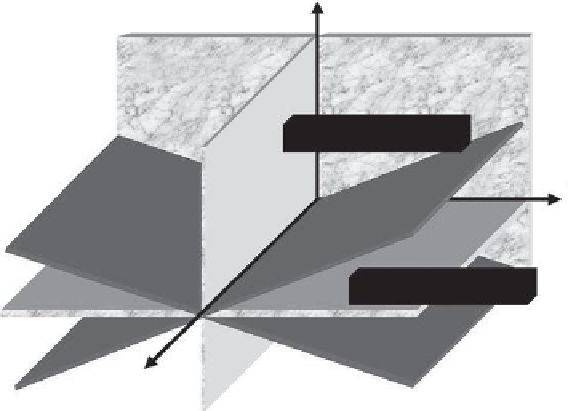Information Technology Reference
In-Depth Information
(parallel to
z
2
), and the maximum direction (parallel to
z
1
). In every plane per-
pendicular to
z
2
, the locus of points with the same energy as
z
2
(i.e.,
E
2
=
0)
is given from eq. (2.60) as
2
1
2
3
=
ε
λ
1
+
ε
λ
3
λ
(2.61)
2
2
1
2
3
ε
+
ε
where
ε
3
are the two coordinates corresponding to the orthogonal axes
parallel to
e
1
and
e
3
. Thus,
ε
1
and
2
1
2
3
(λ
1
−
λ
2
) ε
−
(λ
2
−
λ
3
) ε
=
0
(2.62)
which is a degenerate quadric (
cone
) composed of the following two planes:
λ
2
−
λ
3
λ
1
−
λ
2
ε
ε
=±
(2.63)
1
3
These planes intersect in the
z
2
straight line and are symmetric with respect to the
plane
z
2
z
3
. Their slope depends on the spectrum of
R
. These planes (defined as
constant
E
2
planes) divide the weight space into a (double)
volume of attraction
(
E
2
>
0) and into a (double)
volume of repulsion
(
E
2
<
0) (from now on they
will be defined as
cone of attraction
and
cone of repulsion
, even if, actually,
there is only one cone dividing the two volumes) from the point of view of the
saddle direction
z
2
. Figure 2.1 illustrates this analysis.
z
1
hypercrest
volume of attraction
hypervalley
z
3
volume of repulsion
hypervalley
z
2
Figure 2.1
MCA EXIN ODE cost landscape stability analysis (three-dimensional case).







Search WWH ::

Custom Search